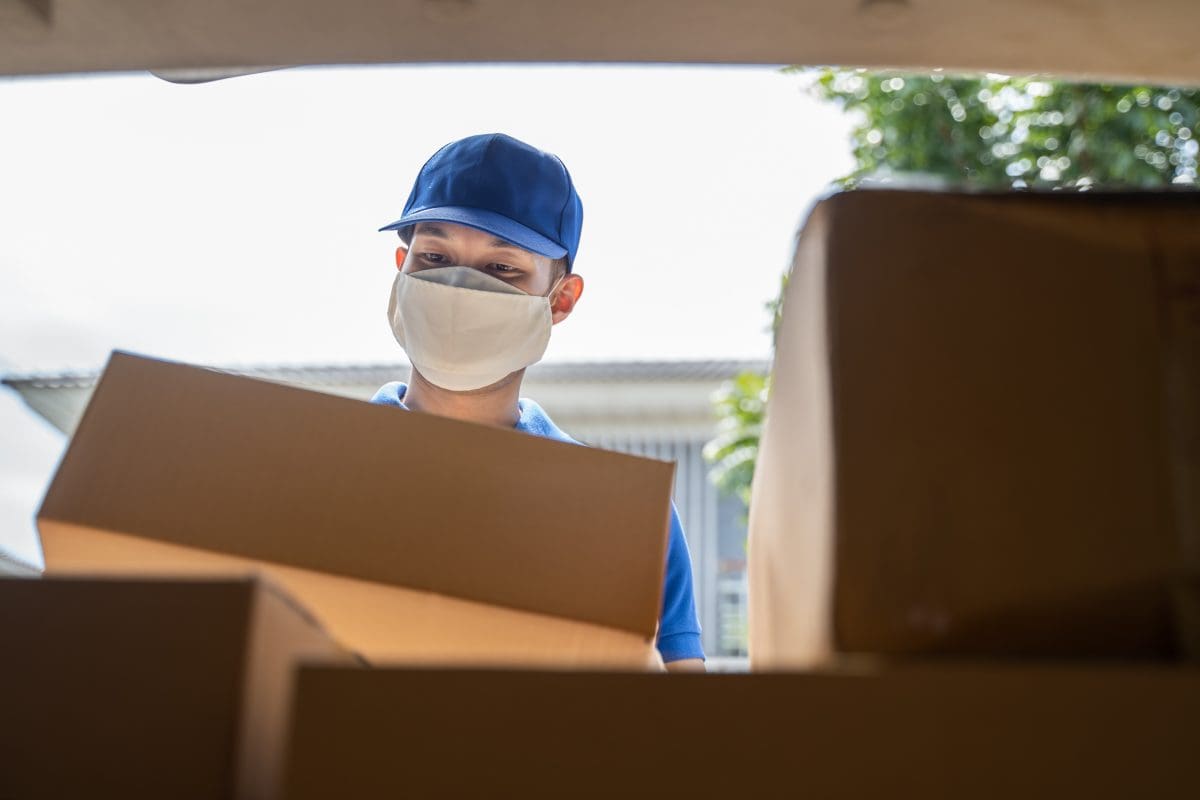
The last mile is arguably the most important step in the delivery process. COVID-19 has forced businesses to adapt the way they approach and plan for the last mile, as well as the procedures during the last mile. Businesses had to adjust per local, state, and national safety requirements, which affected both person-to-person contact and travel. The last mile became more relied upon as consumers stayed at home and utilized online ordering and an explosion of delivery options to stay safe and socially distanced. Delivery companies transformed the last mile in multiple ways to meet these new customer demands.
Demand For Last Mile Delivery
The first main challenge that COVID-19 presented was the extreme increase in the demand for delivery. This was especially prevalent in the business to consumer food delivery market segment. This increased demand puts a large strain on the last mile. Businesses found ways to meet this demand in creative ways. The use of third-party delivery services found traction to solve this issue. Route optimization tools also aided in ensuring that delivery drivers had the fastest and most optimal route possible each day for their last mile deliveries.
A second way COVID-19 has reached the last mile was the conception of contactless delivery. Out of a concern for safety, the last mile found a way to safely deliver products to the end consumer. This did raise several questions as to how contactless delivery would ensure the safety and security of the package until the end consumer received it. Businesses utilized technology, such as location tracking to ensure that packages were properly delivered and reached the end consumer. Delivery drivers also took pictures of the package at its final destination to provide proof of delivery.
Staffing Shortages Impacting Last Mile
COVID-19 brought about a multitude of staffing issues. With the downturn of the US economy, companies had to impose temporary layoffs. In addition, many essential workers chose to opt-out of work for personal safety or other reasons. This led to numerous instances of staffing shortages in all industries. The lack of drivers caused businesses to invent new ways to keep up with the demand. The use of third-party delivery services, as mentioned previously, was one of the major solutions to this problem. Temporary delivery positions became available to cover the demand increase and give opportunities for out of work people to earn a paycheck. The influx of inexperienced delivery drivers made dispatch software an even more integral part of the last mile. Ensuring that all packages were delivered timely and the businesses having the ability to see the drivers in real-time streamlined the delivery process.
A final way that COVID-19 impacted the last mile was the adjustment of timing in deliveries to decrease person to person contact. Due to safety concerns and restrictions, many delivery companies needed to adjust the timing of deliveries to less populated hours to minimize the contact drivers had with others to keep them safe. This was especially prevalent in business to business last mile deliveries. Large delivery shipments now had fewer employees loading and unloading the trucks, which meant a longer stop at each of the locations. Companies had to budget additional time into the delivery processes. Routing software allowed these companies to plan their deliveries accordingly in advance to ensure the estimated time of delivery was accurate. COVID-19 reached the last mile in a variety of ways, but with the assistance of dispatch software, the last mile was able to adapt to meet all the challenges presented.







